Part Two of the Assistive Device Project Documentation: Prototype
Part One Here
Introduction:
Our group was assigned to create a useful device to enhance the life of our assigned person, Joseph. This document explains how we created our prototype to gather feedback from Joseph in preparation for our final project.
Product:

Prototype Layout With Two Separate RFID Bookmarks
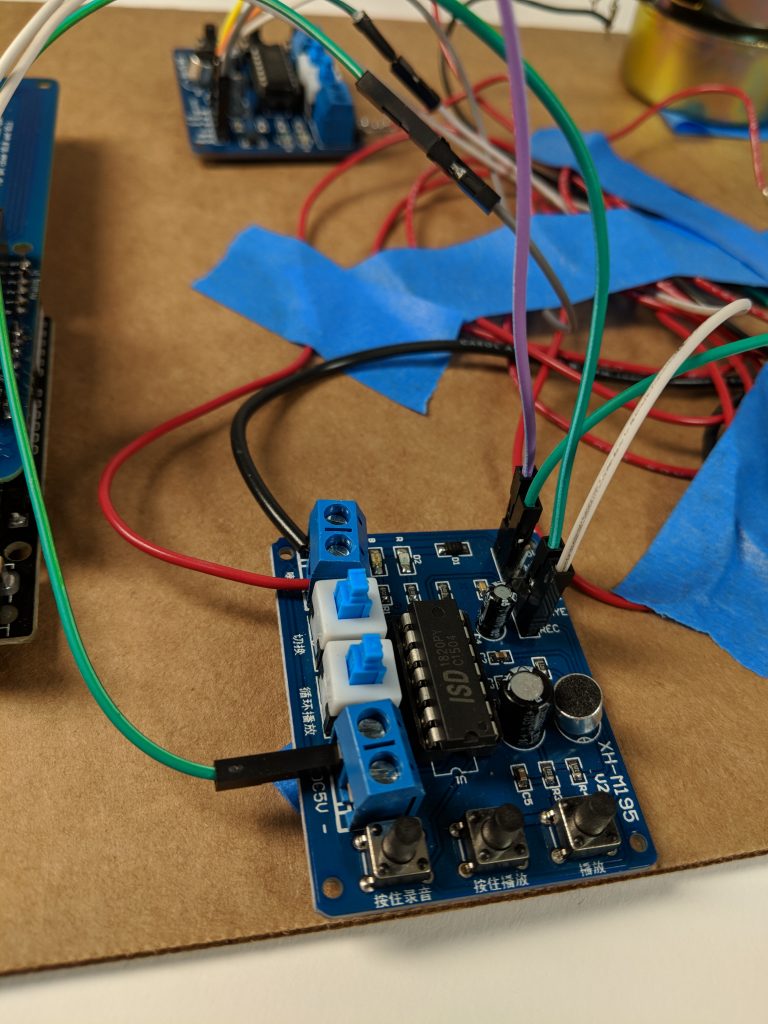
Sound Chip used to emulate desired behavior of final design
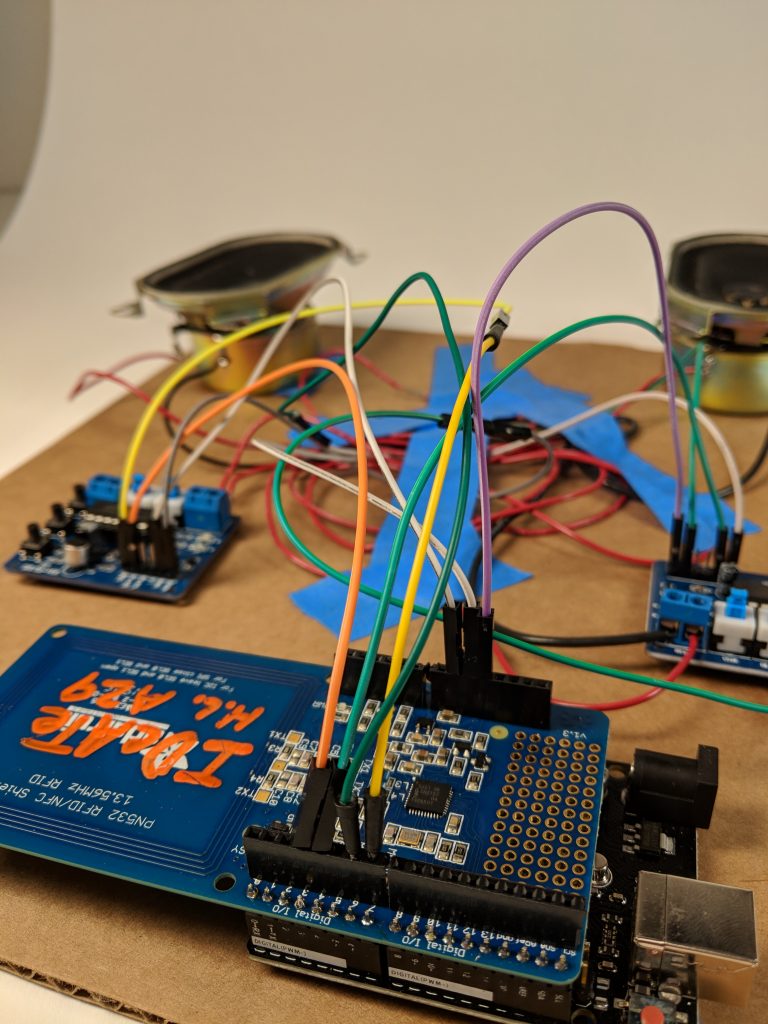
Pinout from the RFID Shield
Product Discussion:
Our device is designed to help you keep track of where you last left off in a book. Each book you are reading will have a special bookmark we created inside of it. When you open the book to read, you take the bookmark out and move it over our device and a short recording will play from the speakers on our device. This recording will be a previously recorded summary of what last happened in the book. After you are done reading, you click the record button, and record a new summary over your previous one and place the bookmark back in the book. In short, our device will play back a recording of what last happened in the book you are reading, so as to refresh your memory and help you keep track of what’s happening in multiple books.
Process:
We first began testing to make sure our RFID tag reader worked.
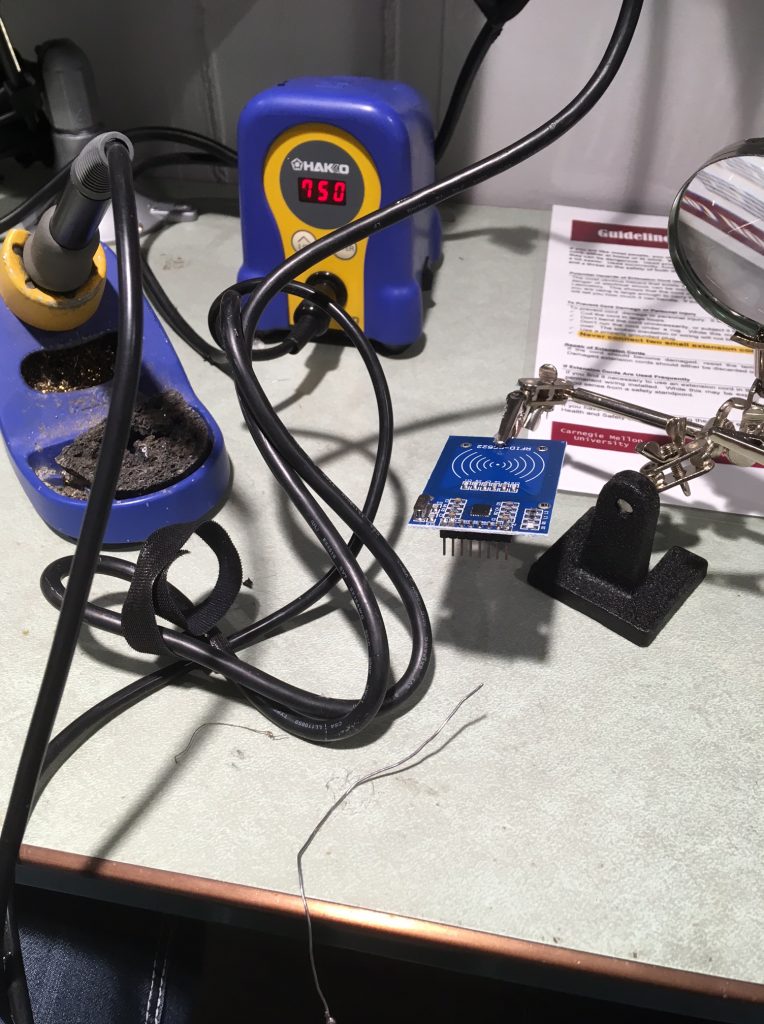
Soldering original RFID tag reader (RC522 chip)

Soldered RFID tag reader

Wired RFID tag reader to test if it works
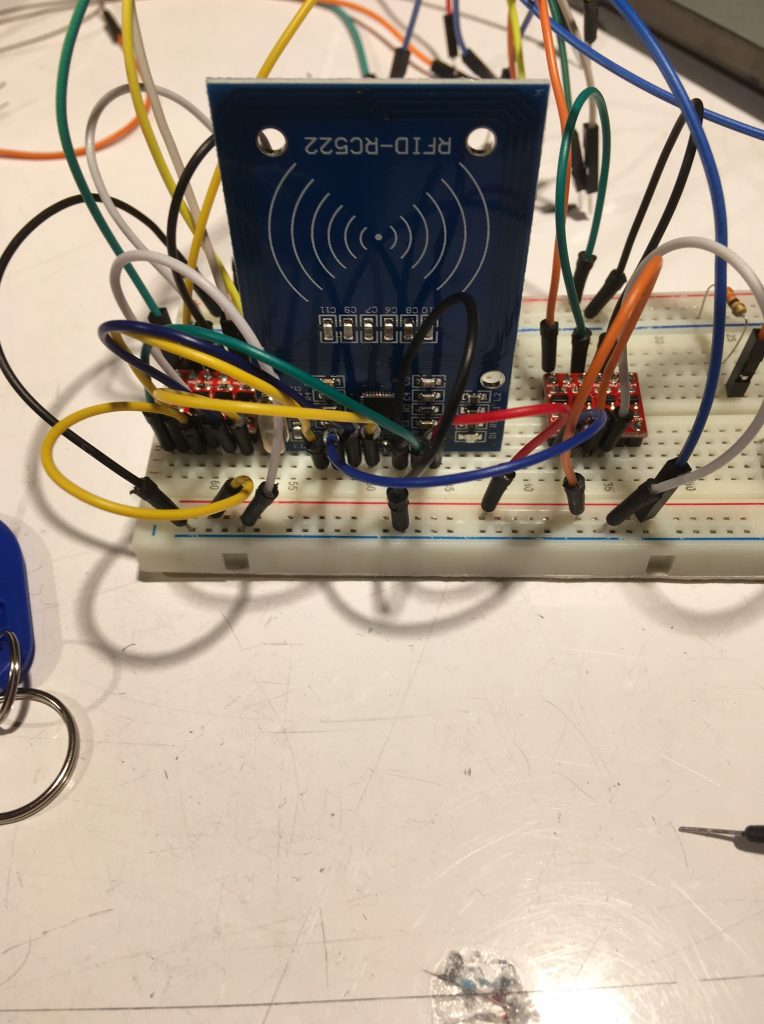
Re-wring RC522 chip with a level shifter since the RFID reader only takes 3.3 v instead of 5 v which is supplied by the Arduino pins

Testing different RFID tags to see which work
Due to the difficulty in using our previous RFID tag reader, we switched to using the Adafruit PN532 Shield. This RFID tag reader is higher quality and has better documentation, making it easier to use.
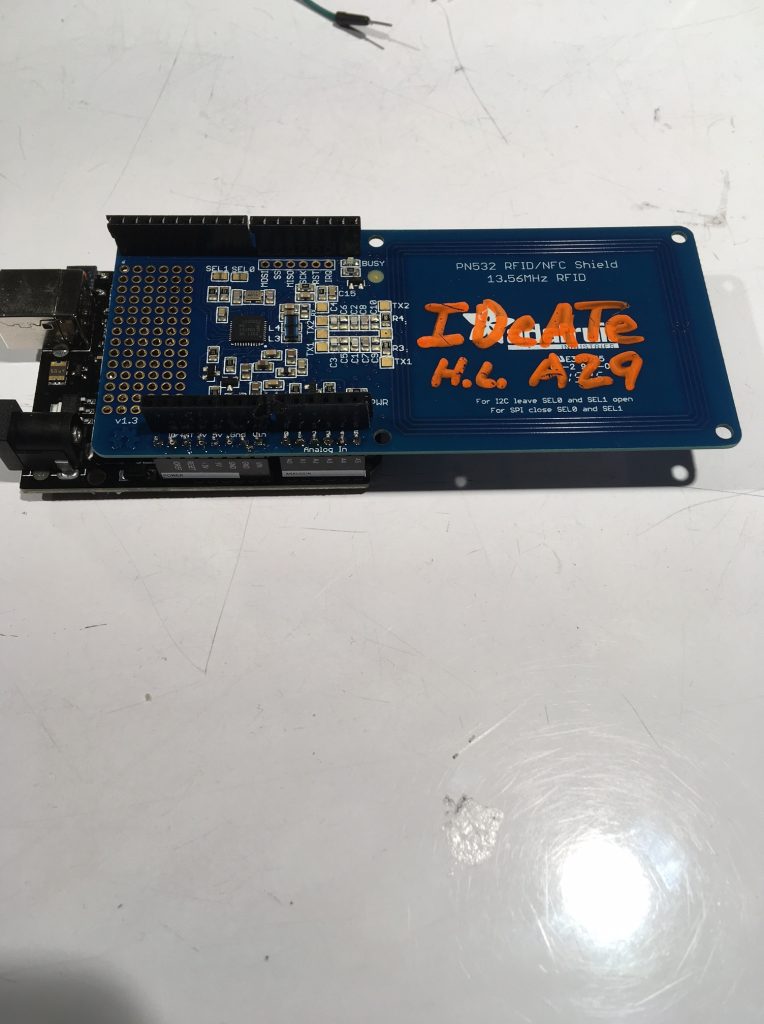
Adafruit PN532 Shield RFID tag reader fully soldered

Testing to see which tags work with the new RFID tag reader
After finally getting the RFID reader to work, we tried to fix our code and get the Arduino to record and play back WAV files. However, due to the complexity of our code and multiple errors in it, we switched to using a voice record and play module to simulate the desired behavior for our prototype.

Voice Record and Play Module

Testing different speakers to find loudest one to use to play back recordings

Finished Prototype at the JCC crit
Major Challenges:
The biggest challenge was scaling our project back into a working prototype in the short amount of time we had. We needed to switch multiple aspects of our code and hardware to get a behaves-like prototype in time. First, we switched our code from dealing with an arbitrary amount of RFID tags into a tangible number of two. This was significantly easier to code as we just used the first character of the RFID tags’ special identification number. Also, our code for recording and playing back audio was complicated and would have taken long to debug, so we switched to using a voice record and play module. This allowed us to finish on time and simplified the code. Other minor challenges were finding loud enough speakers and using the RC522 RFID tag reader. The original RFID tag reader was difficult to use as there were limited resources available online, so we switched to using the Adafruit PN532 Shield RFID tag reader which has great documentation online, making it easier to use. Overall, we faced a lot of technical challenges, but we were able to find alternate solutions to finish on time.
Utility of Crit:
There were several useful ideas we received that we will definitely be using for our final design. The first was making sure that the housing of the final product is portable enough to be moved around the house. It was pointed out that people don’t always read in the same place in the house and being able to move the device around would be very convenient to any avid reader. The second piece of crit we received from Joseph was just to make sure we make enough bookmarks for him and his wife. They are often reading three books at a time each for different book clubs, and accounting for extras if they are also reading additional books outside their clubs, we plan to make at least 10 visually distinct bookmarks. An additional piece that will need to be improved for the final design is including louder speakers because our prototype is barely audible from even short distances. We decided to ignore the input of potentially saving old recordings, so the user can play back old recordings instead of writing over them. This is because after talking with Joseph, he didn’t feel that feature was necessary.

Leave a Reply
You must be logged in to post a comment.